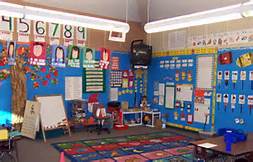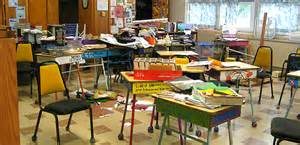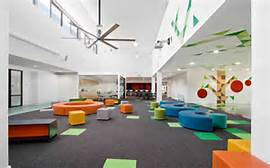 Creating a Warm and Inclusive Classroom Environment: Planning for All Children to Feel Welcome Jessica L. Bucholz Ed.D. jbucholz@westga.edu Julie L. Sheffler
Creating a Warm and Inclusive Classroom Environment: Planning for All Children to Feel Welcome Jessica L. Bucholz Ed.D. jbucholz@westga.edu Julie L. Sheffler Julie.Sheffler@palmbeachschools.org Follow this and additional works at:
http://corescholar.libraries.wright.edu/ejie Part of the Curriculum and Instruction Commons, Curriculum and Social Inquiry Commons, Disability and Equity in Education Commons, Special Education Administration Commons, and the Special Education and Teaching Commons This Article is brought to you for free and open access by CORE Scholar. It has been accepted for inclusion in Electronic Journal for Inclusive Education by an authorized administrator of CORE Scholar. For more information, please contact corescholar@www.libraries.wright.edu. Repository Citation Bucholz, J. L., & Sheffler, J. L. (2009).
- Creating a Warm and Inclusive Classroom Environment: Planning for All Children to Feel Welcome, Electronic Journal for Inclusive Education, 2 (4). Creating a Warm and Inclusive Classroom Environment: Planning for All Children to Feel Welcome Jessica L. Bucholz University of West Georgia Julie L. Sheffler Florida Atlantic University Abstract: The type of classroom environment that a teacher creates and encourages can either increase or decrease a student's ability to learn and feel comfortable as a member of the class. The classroom environment should do as much to foster cooperation and acceptance as the teaching methods that the teacher uses. This article describes a number of methods to help teachers plan for and create a classroom that welcomes and supports all children. At the beginning of the year teachers have the goal of establishing a classroom environment that is favorable for helping all students work cooperatively in order to learn. The classroom environment can either improve or impede a student's ability to learn and feel safe and comfortable as a member of the class. Classrooms that encourage emotional well-being create an atmosphere for both learning and emotional development. Educational research supports creating an atmosphere of mutual respect, where students feel relaxed in asking questions and expressing their thoughts and feelings (Stronge, 2002). Some areas to consider when creating an atmosphere of mutual respect are classroom design, classroom procedures, and classroom strategies. Implementing a few strategies that address these areas can help develop a strong sense of community and encourage positive interactions and cooperative learning for students with and without disabilities.
- A warm classroom environment can lead to increased academic achievement and a sense of pride and belonging in the school. 1 Bucholz and Sheffler: Creating a Warm and Inclusive Classroom Environment: Planning for Published by CORE Scholar, 2009 Classroom Design Create a Warm and Well Decorated Classroom One of the first things a teacher does at the beginning of the school year is organize, arrange, and decorate the classroom.
- The physical environment of a classroom plays a part in the ownership students feel about their school and more specifically their class. The classroom environment should do as much to foster cooperation and acceptance as the instructional method the teacher uses. Children are sensitive to the atmosphere created in the classroom. Is the classroom warm and inviting? Are all areas of the classroom accessible to all children? Are the walls bleak and lacking in color or do the decorations help to make the students feel comfortable? Are areas well defined as to their design and purpose?

- Decorating a classroom with some kind of warmth can help promote a sense of comfort and security. Classrooms tend to be rather cold, bare places until they are decorated. Adding a splash of color can bring life to a sterile environment. Color choice is important when decorating a classroom. Teachers should keep in mind that red and orange can make children feel nervous and unsettled while blue and green can help students feel calm. Furthermore, dark colors take natural sunlight out of a room and can even make people feel drowsy and listless (Hathaway, 1987). Plants, soft chairs, rugs, and pillows can help to add warmth and comfort to a class environment (Rutter, Maughan, Mortimore, & Ouston, 1979). Create a Neat and Organized Classroom While decorations help create a warm environment, organization of the furniture in the room is also important.
- There should be enough space for all students to easily move throughout the classroom. Teachers should consider the use of universal design. Universal design is designing products and environments to be usable by all people, to the greatest extent possible, without the need for modification or specialized design (Burgstahler, 2008). This approach began in the field of architectural 2 Electronic Journal for Inclusive Education, Vol. 2, No. 4 [2009], Art. 4 http://corescholar.libraries.wright.edu/ejie/vol2/iss4/4 design when architects started to engineer accessible buildings from the beginning rather than making renovations to those buildings later (Lieberman, Lytle, & Clarcq, 2008). Universal design for instruction is a set of principles that help in the process of designing the classroom environment and instruction so that they are contributing to the learning of all students (Samuels, 2007).
- Teachers should apply the strategy of universal design for learning to make sure that activities, materials, and equipment are physically accessible and usable by all students. Teachers should also expand safety procedures to all students, including those that are identified with a disability and when teaching, repeat printed directions orally. Desks arranged in neat, orderly rows may make movement throughout the class easier but this arrangement may not help to create a warm, friendly environment. Patton, Snell, Knight, Willis, and Gerken (2001) found that 94 percent of the K-3 teachers they surveyed use a semicircle or cluster to arrange the desks in their classrooms. These teachers felt that grouping desks offered several benefits including encouraging cooperative learning, building a sense of class community, and making the best use of the space.
- Ideal desk arrangements create opportunity for students to be actively engaged in learning and have the opportunity to work cooperatively, when appropriate, with their peers, while still allowing students to navigate the environment safely. Classroom Procedures Create Special Traditions for Your Class Traditions can help create positive feelings and bond students to their class. Start the morning with a beginning of the day tradition. Students could work together to create a class pledge that is recited every morning before the day begins. One example of a class pledge created by Ms. Fitting from Oysterponds Elementary School includes the three Cs: "We will Cooperate, We will Communicate, We will Concentrate, We will have a Good Day." The use of a thought provoking and memorable quote is another possible way to create a special tradition in class. Begin by reading a quote to the class and have 3 Bucholz and Sheffler: Creating a Warm and Inclusive Classroom Environment: Planning for Published by CORE Scholar, 2009 students share their thoughts and feelings about what the quote means to them. Traditions can also be used to end the day. Teachers can give students time at the end of each day for a reflective activity. Examples of activities could include creating a picture of something students learned that day, writing a reflective paragraph in a journal, or writing a note to their teacher stating one thing they learned during the day and one thing that confused them (Lasater, Johnson, & Fitzgerald, 2002).
- Teachers could also have the class write their own song to sing or a poem to recite at the end of every day. Conduct Classroom Meetings Teachers can make their classrooms encouraging and supportive by teaching students problem solving and conflict resolution skills in small groups and whole class meetings (Gartrell, 2006). Nelsen, Lott, and Glenn (1997) defined class meetings as when the teacher assigns a designated time of day when students form a circle and work together to discuss and solve classroom issues and problems. Classroom meetings can help create a sense of belonging and trust for students. Classroom meetings can also encourage children to work together to solve problems while practicing pro-social skills. Browning, Davis, and Resta (2000) used classroom meetings with twenty 1st-grade students to teach them positive forms of conflict resolution and decrease acts of verbal and physical aggression. Prior to the introduction of the class meeting acts of aggression were common in this classroom. After the use of the classroom meeting the number of aggressive acts was significantly reduced. Sisco (1992) used classroom meetings with fourth and fifth grade students and saw a decrease in the number of disciplinary referrals to the office and an increase in self-esteem. Three possible types of classroom meetings include open-ended meetings, problem-solving meetings, and educational-diagnostic meetings (Lundeberg, Emmett, Osland,& Lindquist, 1997). In an open-ended meeting the topic of discussion can be anything of interest to the group. In a problemsolving meeting all class members work together to solve a problem of concern to the class. This could be a problem that involves the entire class or a problem an individual student is facing. The purpose of 4 Electronic Journal for Inclusive Education, Vol. 2, No. 4 [2009], Art. 4 http://corescholar.libraries.wright.edu/ejie/vol2/iss4/4 an educational-diagnostic meeting is to evaluate students' background knowledge before introducing a new topic and assess the level of understanding students have gained for a subject that has recently been taught (Lundeberg, et al.). Following an agenda can be helpful when conducting a classroom meeting (Edwards & Mullis 2003). Suggested meeting items include appreciation and compliments, peaceful conflict resolution and problem-solving activities, old business, new business, and a classroom encouragement activity. It is important for students to know how to give and receive compliments. The appreciation and meeting component of a classroom meeting provides teachers with the opportunity to teach students how to give compliments or provide appreciation to classmates as well as how to receive appreciation and compliments. The focus should be on qualities of the student and things they have accomplished (e.g., “Thank you for helping me learn my spelling words for this week.”), rather than on physical appearance (e.g., "I like the shirt you are wearing."). During the peaceful conflict resolution and problem-solving activities portion of the classroom meeting students work together to help students who have identified that they have an individual problem or the class works to solve a problem they feel they are having as a whole (e.g., getting in trouble in the lunch room for not cleaning up after eating). Students work together to develop a list of possible solutions, evaluate those solutions, and the students involved in the problem then select a solution to try. During the old business time of the class meeting students are provided with the opportunity to share how their previous problem solving attempts have worked. This allows for further suggestions if the previous solution was not successful. The new business part of the meeting gives students the opportunity to make decisions about other types of class business (e.g., what color shirts to wear for field day, how best to prepare for the up and coming science exam, or what to name the class goldfish). Finally, the classroom encouragement activity is designed to give encouragement to the entire class. Edwards and Mullis provide a number of examples of encouragement activities. One example of this type of activity is when the classroom teacher writes a 5 Bucholz and Sheffler:
- Creating a Warm and Inclusive Classroom Environment: Planning for Published by CORE Scholar, 2009 personal note to each student thanking the student for something he/she did or acknowledging specific improvement he/she has made in academics or behavior. Brief descriptions of these suggested agenda items can be found in Table 1. Classroom Strategies Model and Teach Self-Advocacy and Self-Determination Skills One of the most important skills teachers can give their students, especially those with disabilities, is to empower them to advocate for themselves. Students need to be able to make their needs and wants known. For example, preschool students need to be able to tell others when they need to use the bathroom.
- As students get older they need to understand and be able to describe their strengths and weaknesses to their classroom teachers and other people with whom they work. Jones (2006) identified five steps to empower students and help them become self-advocates. A brief summary of the five steps described in detail by Jones can be found in Table 2. Table 2 Five Steps to Empowerment Step Description 1 Encourage disability awareness and self-discovery. Help students identify their areas of strength and areas of need. 2 Teach students about special education services. Help them understand what services are available to them based on the needs identified in their IEP. 3 Teach students to self-monitor their work. This allows them to see their own progress and identify areas they need to work on. This gives them ownership for making the steps necessary to meet their goals. 4 Prepare students for participation. Students need to be aware of what takes place in an IEP meeting so that they have the understanding to be an active participant. 6 Electronic Journal for Inclusive Education, Vol. 2, No. 4 [2009], Art. 4 http://corescholar.libraries.wright.edu/ejie/vol2/iss4/4 The Self-Determined Learning Model of Instruction (Agran, Blanchard, & Wehmeyer, 2000; Palmer & Wehmeyer, 2003) is a teaching model educators can use to help students set educational and learning goals for themselves, develop plans to reach those goals, and monitor their progress toward those same goals. This model of teaching can be used with students with and without disabilities and has been used successfully with adolescents as well as with students as young as five (Agran et al.; Palmer & Wehmeyer).
There are three phases in the Self-Determined Learning Model of Instruction; each phase presents a problem for the student to solve. Students solve these problems by answering four questions for each phase. Phase one requires the student to identify a goal. Students accomplish this by listing things they want to learn, identifying what they already know about the topic, identifying what needs to be done to learn the information they don't already know, and identifying criteria to help them learn this new information. The second phase requires the student to create a plan in order to accomplish their identified goal. During this phase students answer questions that help them to identify what they can do to learn the new information, difficulties the student might face in trying to meet the goal, and ways to overcome those difficulties. The third and final phase requires students to self-evaluate their progress on meeting their goal and make adjustments to their plan as necessary to be successful. They do this by answering four questions that require them to reflect on the actions they took, the difficulties they overcame, and the information they learned. Students end this phase by evaluating whether or not they learned what they wanted to learn when they originally established the goal (Palmer & Wehmeyer).

 Creating a Warm and Inclusive Classroom Environment: Planning for All Children to Feel Welcome Jessica L. Bucholz Ed.D. jbucholz@westga.edu Julie L. Sheffler Julie.Sheffler@palmbeachschools.org Follow this and additional works at:
http://corescholar.libraries.wright.edu/ejie Part of the Curriculum and Instruction Commons, Curriculum and Social Inquiry Commons, Disability and Equity in Education Commons, Special Education Administration Commons, and the Special Education and Teaching Commons This Article is brought to you for free and open access by CORE Scholar. It has been accepted for inclusion in Electronic Journal for Inclusive Education by an authorized administrator of CORE Scholar. For more information, please contact corescholar@www.libraries.wright.edu. Repository Citation Bucholz, J. L., & Sheffler, J. L. (2009).
Creating a Warm and Inclusive Classroom Environment: Planning for All Children to Feel Welcome Jessica L. Bucholz Ed.D. jbucholz@westga.edu Julie L. Sheffler Julie.Sheffler@palmbeachschools.org Follow this and additional works at:
http://corescholar.libraries.wright.edu/ejie Part of the Curriculum and Instruction Commons, Curriculum and Social Inquiry Commons, Disability and Equity in Education Commons, Special Education Administration Commons, and the Special Education and Teaching Commons This Article is brought to you for free and open access by CORE Scholar. It has been accepted for inclusion in Electronic Journal for Inclusive Education by an authorized administrator of CORE Scholar. For more information, please contact corescholar@www.libraries.wright.edu. Repository Citation Bucholz, J. L., & Sheffler, J. L. (2009).




